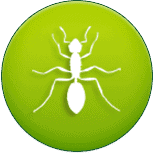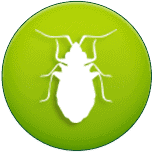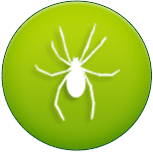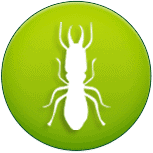Wintertime Pest Control
Why is Pest Control In Winter SO Important?
Interested In Pest Control This Winter?
We’ll give you a call to discuss the best winter pest control application for you:
Green Pest Control Services
Safe and Environmentally Friendly Pest Control is just a call away…
Safe, effective and environmentally friendly – these are the cornerstones of our services at Pointe Pest Control. We believe in utilizing both the safest products and techniques to secure your home from pests. Your home is your biggest investment and we provide proven solutions with guaranteed results so that you can live a healthy and clean, pest-free life.
Where do Pests Go in Winter?
Insects are ectothermic creatures, which means they are cold blooded creatures like lizards. Being ectothermic leaves these creepy crawlies particularly susceptible to the cold, and winter can often be a fatal time of year for many types of bugs. As such, these pests have found different ways to not only cope but survive the inevitable cold each year.
Migration
Similar to birds, a good portion of flying insects have actually taken to migrating during the cold winter months. Probably the most famous insect that is known to take part in such migration is the monarch butterfly, who travels south between August and October each year.
After studying insect migration patterns, it was discovered that insects East of the Rocky Mountains tend to travel to Mexico for the winter while their fellow bugs to the West of the mountain range will make their way to California and surrounding areas to wait out the cold.
Hibernation
Diapause is the insect version of hibernation. Similar to bears and other hibernating creatures, these insects will enter a state of extraordinarily deep sleep in which their metabolic processes slow to a stop. At this time, the bug survives off of stored energy which can last up to a year for some creatures. Eventually, when warmer weather begins to return, the insects will awaken.
During this time, to prevent freezing to death, insects will often engage in one of the following: They can reduce the water concentration levels in their own bodies and dilute present water by introducing more sugars into their cells in order to drastically lower the freezing rate of their bodies, thereby allowing them to survive the frigid temperatures. In other bugs, their bodies will naturally produce cryoprotectants, which are like a form of biological anti-freeze, in the form of glycerol.
In order to both stay warm and stay safe from the risk of being hunted by wintertime opportunists, hibernating insects seek shelter. Surprisingly certain plants’ natural defenses can create these shelters for insects. As an insect begins attaching itself to the plant, it will retaliate by growing defensive layers which eventually encapsulate the bug. While this ends up being counterproductive for the plant, it is highly fortuitous for the hibernating insect. Other insects will burrow into the ground which both maintains a somewhat steady temperature for survival and adds a layer of protection as it is difficult for scavengers to dig through frozen solid earth. And others, find their way into homes…
Enemies Inside the Gates
When the temperature drops, pest activity in general spikes as different insects will be on the search for a new place to call home. This leads to an influx in pests finding their way into houses in the Autumn. As spiders feast on various other species of insects, their activity also increases as they follow their prey into homes where they begin spinning webs under shelter for the coming cold months. Similarly, mice and rats are drawn to the warmth and comfort of our homes.
Mice can fit through extremely tiny holes that may even seem negligible to you. Adult mice can fit through holes the size of a dime while adolescent mice can even fit through holes that are as small as the circumference of a pen and, if the hole isn’t big enough, they can use their sharp teeth to make it larger. Likewise, rats can fit into holes the size of a quarter and, when a hole is too small, they will chew their way in. Rat teeth grow at a surprisingly rapid rate and, as such, they have to chew on things for roughly 28 minutes a day in order to grind down their teeth – otherwise, their teeth would grow to the point where they cannot even close their mouths. The bite pressure of a rat’s jaw is 24,000 psi, while a wolf’s bite has a pressure of only 1,400 psi. This means rats can even chew through metal!
So, while you may feel like the cold is keeping pests at bay, any insects or rodents that are already inside are unaffected by the weather and can continue to wreak havoc in your home. Termites can continue to put the stability of your home at risk, rodents and cockroaches can spread diseases, rats can chew through wires and potentially cause fires, and poisonous spiders can be hiding out in your attics and basements.
Condusive Conditions
There are various different conducive conditions during wintertime that can put you at risk of an infestation. Making sure to attend to these wintertime issues can help you prevent an infestation.
Utility Gaps
Rodents and insects will gravitate towards the warmth and shelter of your home, finding any small crack to wriggle their way into your life. To help prevent this, check the utilities around your home, such as hose taps, electrical boxes, and dryer vents, for gaps or cracks that could lead into your home. Sealing these entry points can help ensure you don’t fall pretty to a pest infestation!
Firewood Piles
Collecting wood for your fireplace in the winter is great! Cuddling up by the fire with a warm cup of tea or hot chocolate and a blanket is one of the highlights of snowy weather. But that collection of logs can potentially cause you some problems (and as the weather begins to warm up, this problem intensifies). Wood piles are like a haven for pests. Whether its insects or rodents, the pile provides shelter and warmth, inviting pests to come gather and build nests or homes, so it is important to take the proper precautions to prevent these pests from finding their way into your home. Wood piles should be moved to a location at least 30 feet from your home if possible. This will deter any pests that gather in that wood haven from entering your home and disrupting your life.
Highways to Your Home
Make sure to trim back any trees or bushes that may be touching your home or shed. While seemingly harmless, the branches act like a highway for rodents, spiders, and other pests – taking them straight from your yard onto your roof and, once there, these unwelcome guests often find a way to burrow into your attic and home.
Preventing Winter Pests
At Pointe Pest Control, we are dedicated to solving pest problems. This is why we do not provide temporary fixes, we provide long-term solutions. Pest control is a battle that needs to be fought in every season, and a good treatment in the winter will drastically improve our ability to more quickly control the pests that emerge in the spring. Our technicians are trained to find bugs and rodents in their many hiding spots. Just because it’s cold outside, doesn’t mean your pest problems have vanished. Give us a call and we can stop an infestation before it’s too late. We provide proven solutions with guaranteed results so that you can live a safe and healthy pest-free life.
Winter is actually one of the best times to get your home inspected and sprayed for insects and spiders. Call us today to get your home secure and protected from these pesky pests.
With Over 12,000 5 Star Reviews
Your Pest Problem is Gone, Guaranteed
Why Pointe Pest Control?
Pointe Pest Control is one of the largest family-owned and operated pest control companies in the U.S. We have pest control and customer service down to a science, and we know you’ll appreciate the results.
CALL (630) 581-2640
FOR YOUR FREE ESTIMATE TODAY







What’s Your Pest Problem?
Pointe Pest Control Reviews
Here’s what our happy customers had to say about our services:
Request a Free Quote Today
(We do not share your data with anybody, and only use it for its intended purpose)







